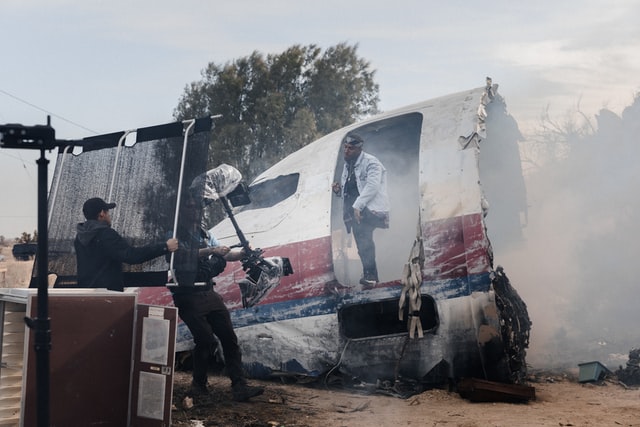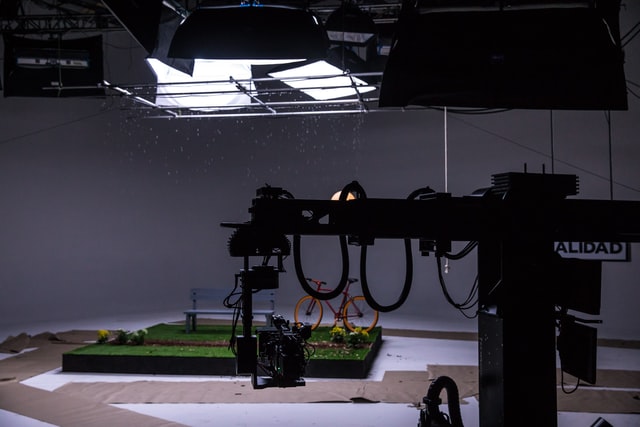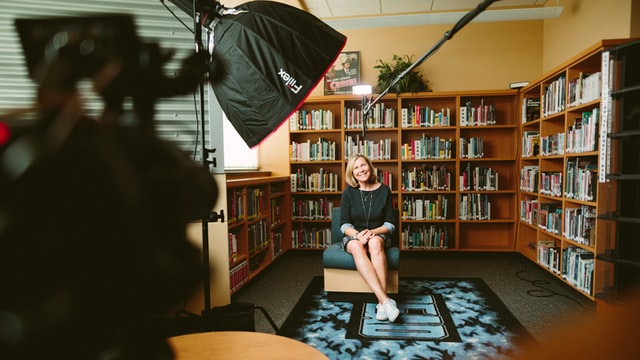Your film locations need both character and functionality. They need to enhance the story and still be accessible for your crew. During a location recce, your creative team checks the site to ensure it’s suitable for filming. This includes conducting a risk assessment, making sure there is room for facilities and the logistics of filming. Below we have created a comprehensive guide on how to have a successful location recce.
Looking for a location? With Scouty, you can search hundreds of unique production spaces for all your creative needs.
What is a Location Recce?
A recce which comes from the military word reconnaissance is a production term used in the UK, Europe and Australia. In the US, site survey or simply location scouting is more commonly used. A location on a film set needs to look right for the story, be accessible and within budget. On a professional film set, finding this is the job of the location manager.
When the location manager has found a suitable location, various crew members visit the site to check that it fits their needs. This is called the location recce and includes the director, director of photography and production designer. In addition, there may be a technical recce consisting of the script supervisor, sound mixer, gaffer and grip. Each individual will be on the lookout for different issues that could cause problems during production.
How to Find a Film Location
During your script breakdown, list every location that appears in your film. These might be a mix of both exterior, interior and studio locations. A production meeting with the producer and director will let you know more about what they want. Next, you will need to research establishments, and you will likely want them to be in travelling distance to one another. Scouty lets you explore potential locations within cities and regions.
Once you have found a location, you can book a date or organise a location recce. A recce is more commonplace in film and TV. An initial recce may be carried out by the location manager where basic logistics are evaluated such as parking spaces, powers sources and a risk assessment. During this stage, lots of photographs will be taken to share with the rest of the creative crew. You will also need to negotiate a price with the host and share this with the producer. On Scouty you can see the average price of a location which can boost up the process and help come to an agreement fast.
Below is a detailed location recce checklist. Initially, this task will be carried out by the location manager, followed by the producer and then individual crew members. It’s common for locations to be booked well ahead of production. For major film shoots, several recces may be done before finalising a site.
Facilities
How will your crew arrive to set, and where will they park? This is very important for both small and large film sets. All departments, from costume to camera, have vans full of equipment. You will also need access to toilets and for these to be far away from the set to not interfere with sound recording. Low budget sets might rely on a local pub/cafe, but larger productions will need to hire portaloos.

- Can crew easily travel to the location
- Is there enough room for parking
- Do you have access to toilet facilities
Photo by Jakob Owens on Unsplash
Space
Is there enough room for shooting space on location? You can make a room look small, but it’s impossible to make a small room bigger. There needs to be enough room on set for all cast, crew and equipment to operate. This includes lights and lighting stands. It’s also good to have a dedicated green room where actors can wait whilst not on set. Depending on the size of your production, you might need space for trailers.

- Is there enough shooting space
- Can cast, crew and equipment fit
- Do you have space for a green room
Photo by Brands&People on Unsplash
Power
Is there a working power source? Lighting interiors can be power-hungry, and for exteriors, you may need to hire a generator. On your initial visit, count the number of live power sockets. It might be a good idea to check if they are working. During the technical location recce, your gaffer will let you know if there is enough power.
- Do you have access to power
- How many power sockets are there
- Will you need to hire a generator
Sound
Whilst on location, close your eyes and listen. Dialogue heavy scenes will need a quiet atmosphere. Does the room echo when you speak? Can you hear road traffic in the distance, is there a tin roof that will cause disruption when it rains. Perhaps there is a nearby school that is loud during playtime. To ensure audio quality – additional prep may be needed before filming. This includes a technical location recce where your sound mixer can evaluate if they need specialist recording equipment.
- Is your location too noisy
- Can you hear background noise
- Will dialogue be disrupted by noise
Lighting
What direction is natural light coming from, and how will this change throughout the day? Lighting can change throughout the year, so you will need to keep in mind the shooting month. The type of lighting you get in rooms can also differ between hard and soft light. You might need to see how lighting affects a location at different times of the day. Your director of photography will guide you on lighting needs.

- Is there enough natural light
- Does the light change during the day
- How will weather changes affect lighting
Photo by Sam McGhee on Unsplash
Risk Assessment
Last but not least, during a location recce, you will need to complete a risk assessment. This helps you understand the potential hazards on set. You will need to review each location and the scene that will take place there. For example, common risks include weather, heights, slips and trips, electrical safety and equipment theft. When you have found risks, you will need to reduce or eliminate them.
- Is the location safe for work
- What are the potential risks
- How can the risks be reduced
A recce can save you lots of time during both filming and editing. It’s a vital part of the pre-production process and should not be missed even on low budget film sets.
If you are looking for a location for your next creative project, Scouty can help you search hundreds of unique production spaces.

